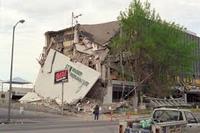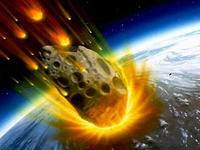-
Limitations and side effects of large-scale geoengineering
Despite international agreements on climate protection and political declarations of intent, global greenhouse gas emissions have not decreased, and with the accelerating industrialization of emerging markets, are not likely to any time soon. Therefore, large-scale methods – called geoengineering or climate engineering — artificially to slow down global warming are increasingly being discussed. Scientists say that the long-term consequences and side effects of these methods have not been adequately studied.
-
-
Dassault Systèmes, Georgia Tech expand STEM education collaboration
Dassault Systèmes the other day announced that the Georgia Institute of Technology will adopt the company’s 3DEXPERIENCE platform for 10,000 users (students and educators), including its range of capabilities in the design authoring, digital manufacturing, collaboration, scientific simulation, and visualization fields. The announcement comes after nearly twelve years of collaboration, in which Georgia Tech and Dassault Systèmes have partnered to establish an ambitious science, technology, engineering, and mathematics (STEM) education program.
-
-
Lockheed Martin launches updated, expanded Engineers in the Classroom (EITC) toolkit
This week is National Engineers Week, and Lockheed Martin, a company which employs 60,000 of them, is marking the week by launching an updated and expanded Engineers in the Classroom (EITC) toolkit created in partnership with National Geographic. These materials, which can be found on Lockheed Martin’s EITC Web site, will help engineers and scientists engage students in hands-on, creative activities with a goal of inspiring them to consider careers in STEM.
-
-
Transfer of knowledge learned key to improving science education
Attendees of a workshop at the annual meeting of the American Association for the Advancement of Science were immersed into “active learning,” an approach inspired by national reports targeting U.S. science education in general, and, more specifically, the 60 percent dropout rate of students in science, technology, engineering and mathematics (STEM). The workshop focused on how science students learn material, but, more importantly, how well they transfer the concepts they have learned into their next class — in the same or a different discipline — or into their jobs.
-
-
Math is important but should it be compulsory?

There was much discussion recently about making it compulsory for year 12 students in New South Wales, Australia to study some mathematics. Over the past ten years at least, the total proportion of students studying Year 12 math has remained stable at around 80 percent, but the trend around the country has been for students studying math to take lower levels of math. The problem of declining math skills is complex and its solution will not be easy, quick or as straightforward as making math compulsory. At the very least the solution will require qualified math teachers in all math classrooms, an engaging curriculum that has clear relevance to the multitude of pathways that students might pursue, including trades and business as well as science, and clear statements from colleges and universities detailing the essential prerequisites that students require for their programs.
-
-
Quake-vulnerable concrete buildings in Los Angeles area identified

Researchers have identified nonductile concrete buildings constructed before roughly 1980 in the Los Angeles area. This category of buildings is known from experience in previous earthquakes to have the potential for catastrophic collapse during strong earthquakes. Nonductile concrete buildings were a prevalent construction type in seismically active zones of the United States before the enforcement of codes for ductile concrete which were introduced in the mid-1970s. A companion study estimates that approximately 17,000 nonductile reinforced concrete buildings are located in the most highly seismic areas of California. More than seventy-five million Americans in thirty-nine states live in towns and cities at risk for earthquake devastation.
-
-
Protecting cities from floods cheaper than post-flood damage repairs

Researchers say that global warming is here to stay, and thus it is time to start making plans for dealing with the inevitable flooding which will occur as ocean levels rise as a result of warmer water and melting snow and ice. Approximately a billion people currently live in areas which are most at risk — low-lying coastal areas. It is not likely that towns and cities will be moved farther inland, so other measures need to be taken. The researchers say that flood prevention strategies are well established, for example, building levees, barrier islands, etc., so it is not difficult to draw up estimates for such schemes for individual areas.
-
-
Spreading STEM learning opportunities in the San Diego area
UC San Diego and the San Diego region more broadly are well known for strength in STEM— or science, technology, engineering, and mathematics — education. There are numerous STEM pipeline outreach efforts already underway. What has been missing and needed, however, is coordinated and systematic action to spread learning opportunities and to plug “leaks” in the K-20 pipeline to STEM skills, degrees, and careers. The STEM Success Initiative aims to gather community and university resources to lift the region’s K-20 STEM education. The STEM Success Initiative has been launched by the Center for Research on Educational Equity, Assessment and Teaching Excellence (CREATE) at UCSD.
-
-
Zapping bridges with electricity to test for corrosion
One out of nine of the nation’s bridges is structurally deficient and that more than 30 percent of bridges have exceeded their 50-year design life; the average age of the nation’s bridges is currently forty-two years. Motorists in the United States make more than 200 million trips across bridges rated structurally deficient or in need of significant maintenance and yearly inspection. Of the more than 17,000 bridges in New York, 12.5 percent are structurally deficient and 27 percent are considered functionally obsolete. One major culprit for bridges’ deterioration: corrosion of reinforcing steel. New testing method could replace expensive, time-consuming visual inspections.
-
-
Purdue selects students for the 2014 future science leaders class
Emerging Leaders in Science and Society (ELISS) is a program of the American Association for the Advancement of Science (AAAS). “ELISS prepares graduate and professional students to collaborate within a diverse team to understand the key drivers of complex problems and to plan and implement a team project,” said ELISS director Melanie Roberts. “ELISS graduates will be better able to integrate expertise across disciplines and coordinate action across boundaries to tackle our most complex issues.”
-
-
NIST: Joplin tornado highlights need for building design, construction standards
Nationally accepted standards for building design and construction, public shelters, and emergency communications can significantly reduce deaths and the steep economic costs of property damage caused by tornadoes. That is the key conclusion of a two-year technical NIST investigation into the impacts of the 22 May 2011 tornado that struck Joplin, Missouri. Report and recommendations released for public comment.
-
-
Using gaming to spark kids' STEM interest, improve physical fitness
A team of Purdue University technology researchers will use a $1.2 million National Science Foundation grant to tackle two national challenges: increasing children’s interest in science, technology, engineering, and math (STEM); and decreasing childhood obesity. The three-year project parlays kids’ innate interest in video games and solving big problems to inspire them to gain the STEM skills needed to create technology-based fitness games. The project will also encourage students to create exergames that require players to get up and move.
-
-
Best way to stop a killer asteroid? Form a committee

The United Nations (UN) has adopted several recommendations of a new asteroid defense plan, the first steps in preventing Earth from being struck by an asteroid. The recommendations were a response to an asteroid strike earlier this year in Chelyabinsk, Russia. This object injured thousands and was around seventeen meters across. We have only found 1 percent of these “killer” asteroids, meaning there are hundreds of times more out there than we know of. One of them, sooner or later, will have our name written on it. For a global threat we need a global response, as well as a global share of the blame if it goes wrong.
-
-
New barrier system to protect Venice from rising seas

The City of Venice, Italy has carried out the first test of its $7.3 billion barrier system designed to protect the city from rising sea levels. The system, known as MOSE (MOdulo Sperimentale Elettromeccanico), consists of seventy-eight mobile barriers divided into four sections at the three inlets to the Venice lagoon.
-
-
Using hills to shelter buildings from tornadoes
Researchers have demonstrated the influence of hills on tornadoes. The researchers’ models revealed that the height of a hill and the size of a tornado’s vortex have a significant effect on the tornado’s destructive power. The findings could be used to identify safer areas for construction.
-
- All
- Regional
- Water
- Biometrics
- Borders/Immig
- Business
- Cybersecurity
- Detection
- Disasters
- Government
- Infrastructure
- International
- Public health
- Public Safety
- Communication interoperabillity
- Emergency services
- Emergency medical services
- Fire
- First response
- IEDs
- Law Enforcement
- Law Enforcement Technology
- Military technology
- Nonlethal weapons
- Nuclear weapons
- Personal protection equipment
- Police
- Notification /alert systems
- Situational awareness
- Weapons systems
- Sci-Tech
- Sector Reports
- Surveillance
- Transportation
Advertising & Marketing: advertise@newswirepubs.com
Editorial: editor@newswirepubs.com
General: info@newswirepubs.com
2010-2011 © News Wire Publications, LLC News Wire Publications, LLC
220 Old Country Road | Suite 200 | Mineola | New York | 11501
Permissions and Policies
Editorial: editor@newswirepubs.com
General: info@newswirepubs.com
2010-2011 © News Wire Publications, LLC News Wire Publications, LLC
220 Old Country Road | Suite 200 | Mineola | New York | 11501
Permissions and Policies
